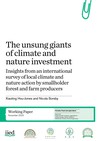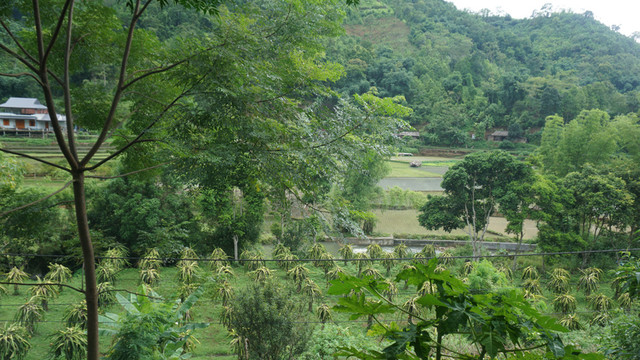Smallholder farmers worldwide spending $368bn annually adapting to climate change, nature loss
Farmers’ investment dwarfs money offered by international community for climate adaptation.
A global survey across 13 countries in Asia, Africa and Latin America suggests smallholder farmers are spending US$368 billion of their own income every year on measures to adapt to climate change including through conserving or restoring biodiversity, according to the Forest and Farm Facility and IIED.
The survey of more than 1,800 farmers found that on average, each farming household was investing $838 every year. With 439 million smallholder farmers globally, it is likely that they are collectively investing $368 billion annually on climate change adaptation, dwarfing the $230m pledged for the Adaptation Fund at last year’s COP27 climate negotiations. The hosts for this year’s negotiations, the United Arab Emirates, have said agriculture and food production will be a major focus of the discussions.
Separate analysis released by farmer networks representing over 35 million small-scale producers in Africa, Latin America, Asia and the Pacific, reveals that only around 0.3% of international climate finance was spent helping small-scale family farmers adapt in 2021 ($2 billion) even though they produce a third of the world's food. The UN’s recently published Adaptation Gap report said spending on adaptation needs to increase by 10 to 18 times to help the most vulnerable communities adapt to climate change.
In 'The unsung giants of climate and nature investment', researchers reveal that every single respondent to their survey had noted some kind of impact on their farming from climate change, including floods, droughts, increase in pests or disease, changes in seasons or amount of rainfall.
On average, farmers in the survey were spending between 20 and 40% of their annual income on trialling and implementing ecological farming practices to adapt to these changes.
The most common measures mentioned include changing their farming hours or planting and harvesting schedules; controlling pests, erosion and surface water run-off and improving soils through ecosystem-based approaches; protecting natural areas and increasing the number of species of crops, trees, animals on their land; and attending training courses in how to adapt to a changed climate.
Xiaoting Hou-Jones, a senior researcher at IIED, said: “Farmers working small plots of land around the globe are the unsung heroes of the battle to adapt to the climate and nature crises. Climate change has already had profound impacts on their ways of life. They are also investing significant amounts of their time and money to adapt, often in ways that can help people and nature thrive together, dwarfing the contributions from rich governments.”
The $368 billion figure is likely a gross underestimate of the investment these farmers are making because it doesn’t take into account the time they are spending on implementing these measures. The survey indicated that each smallholder household was spending, on average, 107 days per year on adaptation measures, with 41% of respondents spending more than 40% of their farming time on them.
Just over a third of survey respondents indicated that they had received external support to adapt to climate change, mostly from non-governmental organisations and farmers’ cooperatives or associations. But many told researchers they were still in need of help, including financial support as well as training and education in a variety of technical topics.
Damian Sulumo, programme officer at Tanzanian farmers association MVIWAARUSHA, whose members took part in the survey, said: “Billions of dollars have been pledged by public and private investors to projects designed to help society adapt to climate change and address nature loss but we know too little money is getting to the farmers whose lives and livelihoods are threatened by a heating planet.
“The international community needs to heed the evidence that shows providing direct finance through producer organisations like cooperatives, associations and territorial groups, can support and encourage smallholder producers to take action. By working collectively, we can reach the scale needed to influence policies and markets not only for the betterment of our farmers’ own prospects but also for the global fight against climate change and biodiversity loss.”
Notes to editors
The analysis released by farmer networks was supported by the Foundation for Farmers Organisations and Restorative Action. The analysis was conducted by Climate Focus.
For more information or to request an interview, contact Simon Cullen:
+44 7503 643332 or simon.cullen@iied.org





